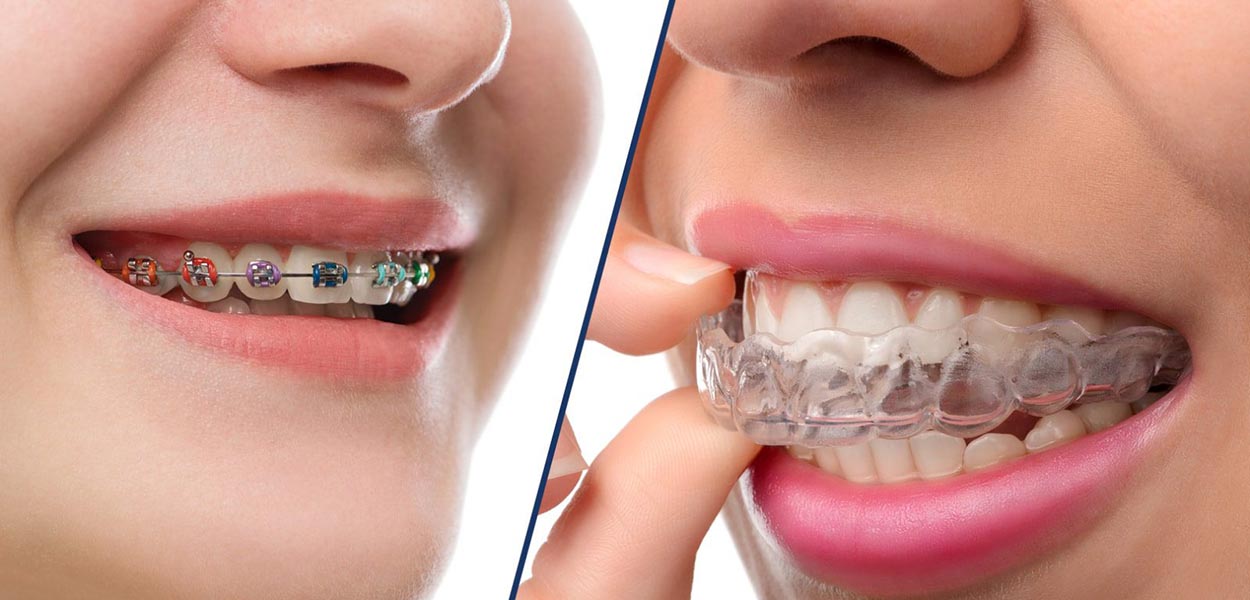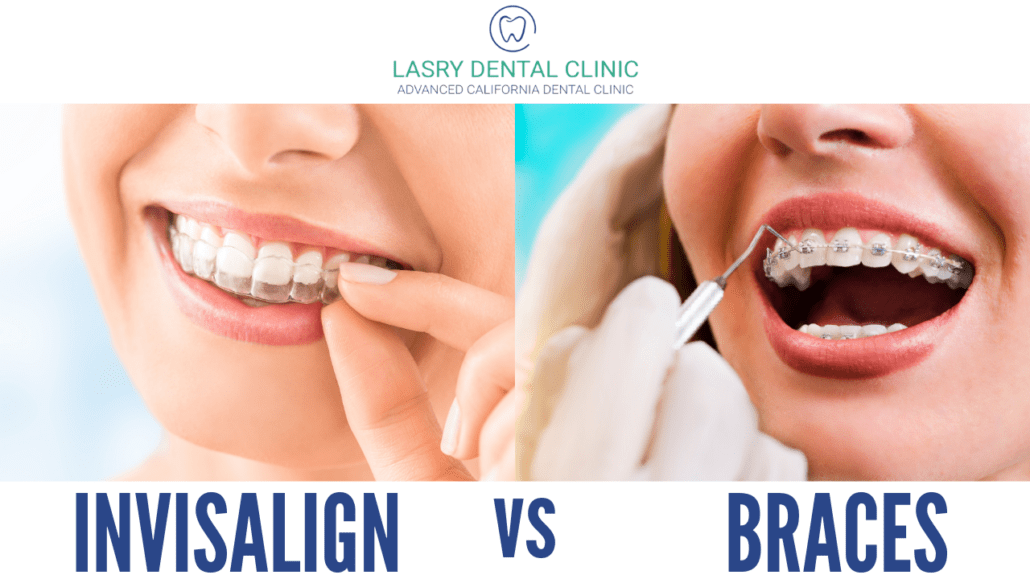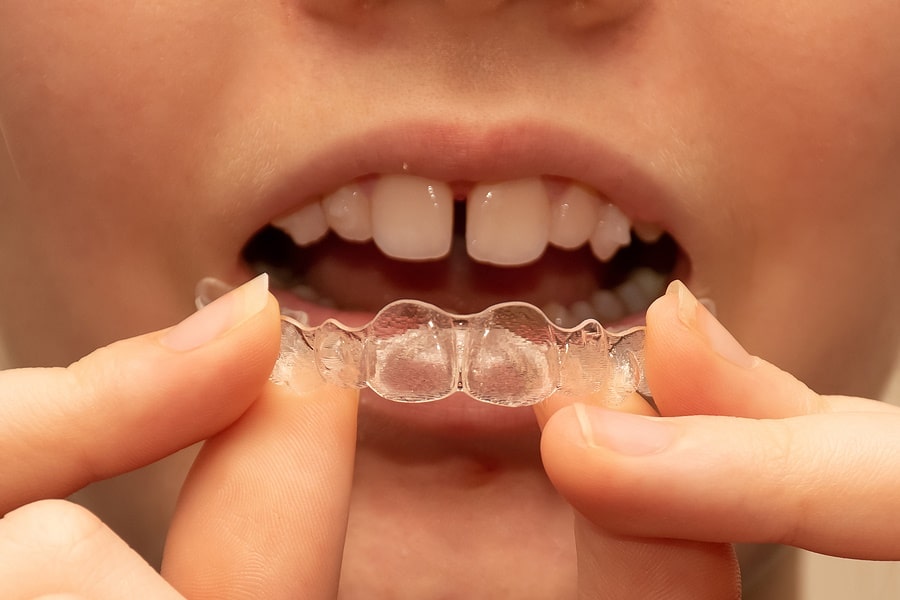Success Stories: How Invisalign Changed Lives and Boosted Confidence
Invisalign vs. Conventional Dental braces: Which Alternative Is Right for You?
When considering orthodontic treatment, the choice between Invisalign and traditional braces presents several important factors that merit cautious evaluation. Invisalign uses a discreet alternative with detachable aligners, while conventional dental braces supply a more visible yet effective option for extreme misalignment.
Review of Treatment Alternatives

In contrast, traditional dental braces include metal braces and cables that are adhered to the teeth. This method uses continuous stress over time to accomplish alignment. While effective for intricate orthodontic problems, typical braces need regular gos to for adjustments and can present challenges in preserving dental hygiene as a result of the difficulty of cleansing around cables and brackets.
Both alternatives have their values, and the selection typically pivots on specific oral problems, way of life choices, and client conformity. Inevitably, seeking advice from an orthodontic professional is essential for determining the most suitable treatment plan tailored to individual needs. Understanding the nuances of each option can considerably influence the overall success of orthodontic therapy.
Aesthetic Considerations
A substantial aspect influencing the choice in between Invisalign and standard braces is the visual charm each treatment supplies. Invisalign aligners are crafted from clear plastic, making them essentially unnoticeable when put on.
On the other hand, conventional braces are composed of metal braces and cables, which can be extra obvious. While developments in orthodontic modern technology have actually led to the growth of smaller braces and colored elastics, typical braces still keep a more obvious profile. For some people, the visibility of dental braces may prevent them from seeking needed treatment.
Eventually, the choice in between Invisalign and conventional dental braces may pivot on personal choices concerning visual appeals. Patients that prioritize discernment commonly favor Invisalign, while those that are much less worried regarding presence might go with traditional dental braces. Understanding the visual ramifications of each choice is critical for making an informed choice that lines up with one's way of life and choices.
Convenience and Convenience

In regards to comfort, Invisalign aligners are detachable, allowing clients to appreciate their preferred foods without constraint and maintain optimum dental health. Cleaning and flossing are simplified, as the aligners can be taken out during these regimens, whereas traditional braces require cautious maneuvering around braces and cords.
In my site contrast, standard braces require normal modifications, making them much less convenient for those with hectic schedules. In general, the convenience and convenience of Invisalign make it an attractive selection for numerous people looking for orthodontic treatment.
Treatment Period and Effectiveness
While both Invisalign and standard dental braces are effective in fixing oral imbalances, the duration of treatment can vary dramatically between both alternatives. Generally, Invisalign treatment can take anywhere from 12 to 18 months, depending upon the intricacy of the instance. The clear aligners work by gradually moving website here teeth right into their preferred settings, and normal follow-ups with an orthodontist aid ensure progress stays on the right track.
In comparison, typical dental braces frequently need a longer dedication, normally varying from 18 months to three years. This is due to their fixed nature and the use of brackets and cables, which can be a lot more efficient for serious imbalances and intricate instances (Invisalign). The therapy performance of typical dental braces is well-documented, as they permit exact changes and better control over tooth activity
Inevitably, the selection in between Invisalign and standard dental braces might pivot on both the awaited therapy period and the certain oral problems available. Consulting with an orthodontist is vital, as they can supply customized suggestions based on private requirements, making certain the picked approach straightens with wanted durations and end results.
Price Comparison and Insurance Policy Choices
Expense plays a significant duty in the decision-making procedure for people thinking about orthodontic therapy, whether selecting Invisalign or traditional braces. Usually, the price of Invisalign ranges from $3,000 to $8,000, while traditional dental braces commonly cost in between $2,000 and $6,000. Aspects influencing these prices include the intricacy of the situation, the period of treatment, and geographical area.
Numerous oral insurance plans give partial protection for orthodontic treatments, however the specifics can vary extensively. Generally, standard braces might be much more regularly covered by insurance coverage strategies compared to Invisalign, which some insurance firms categorize as a cosmetic procedure.
In addition, a number of orthodontic methods Continued supply flexible layaway plan, making both therapy alternatives much more obtainable. Patients ought to make inquiries about potential financing choices and price cuts for upfront payments. Examining the complete price, including insurance coverage advantages and settlement strategies, is important for making a notified decision that lines up with both aesthetic preferences and budget plan considerations.

Conclusion
In summary, the choice between Invisalign and conventional braces depends upon several aspects, consisting of visual preferences, comfort, treatment duration, and expense. Invisalign provides a discreet, detachable alternative that helps with oral health and nutritional flexibility, while typical dental braces may be a lot more suitable for intricate dental problems and often come with a reduced rate point. Eventually, consultation with an orthodontist is important to analyze specific circumstances and figure out one of the most suitable therapy alternative for accomplishing ideal dental positioning.
When taking into consideration orthodontic therapy, the option in between Invisalign and standard dental braces presents several essential elements that warrant careful evaluation.Comparing Invisalign and traditional dental braces exposes distinctive therapy choices for orthodontic modification.While both Invisalign and traditional braces are effective in remedying oral misalignments, the duration of treatment can vary considerably in between the two choices.Cost plays a significant function in the decision-making procedure for individuals taking into consideration orthodontic therapy, whether opting for Invisalign or standard dental braces.In recap, the selection in between Invisalign and typical braces pivots on multiple aspects, including visual choices, comfort, treatment duration, and cost.